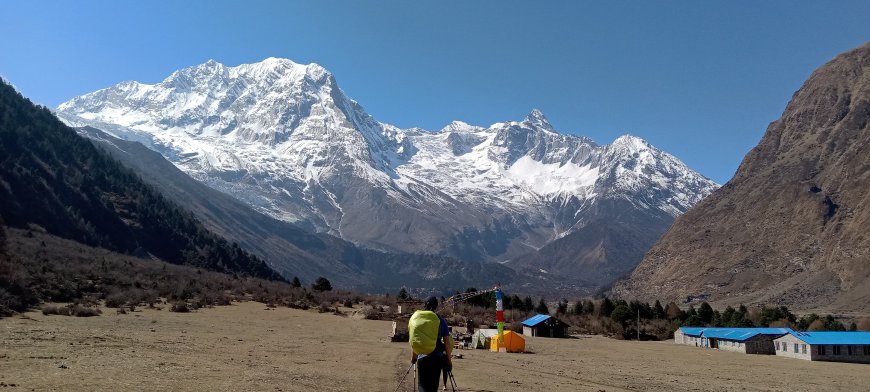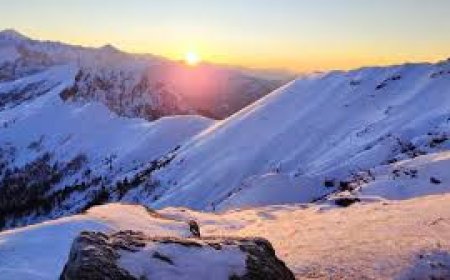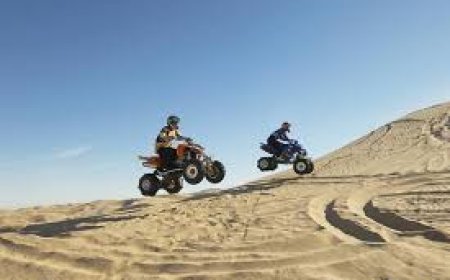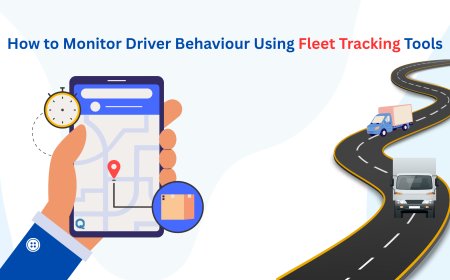How to Avoid the Wicked Pitfalls of Annapurna Trekking
Discover the epic Annapurna Circuit Trek—Nepal’s most scenic adventure through diverse landscapes, high passes, and Himalayan culture.

Trekking theAnnapurna Circuit is a dream for many, but it can be tricky if you're not careful. One of the biggest mistakes is underestimating altitude sickness. The high passes, especially Thorong La at 5,416 meters, are no joke. To avoid problems, make sure to go up slowly, take breaks to get used to the altitude, and drink plenty of water. If you start feeling headaches or nausea, dont brush it offget down to a lower altitude if things get worse. Many trekkers overlook this and can end up in serious trouble.
Another common issue is not being physically ready. The trek is lengthy with steep climbs and rough paths. If you haven't trained properly, you could end up exhausted or hurt. Start your training weeks ahead with cardio and strength workouts, focusing on building your endurance and leg strength. It's also a good idea to practice hiking with a loaded backpack so you know what to expect.
Not having the right gear can cause problems, too. The weather in the Annapurna region can shift quickly, from hot sun to cold and heavy rain. Make sure to pack layers, a good waterproof jacket, solid boots, and a warm sleeping bag. Cheap gear can lead to discomfort and sickness, so go for quality when you can.
Dont forget to respect local customs and etiquette. It's important to acknowledge the diverse communities along the trail. Simple things like greeting locals, asking before taking photos, and dressing modestly can enhance your experience.
Lastly, try not to rush your trek. The Annapurna Circuit deserves your time. Rushing can lead to altitude sickness and make you miss out on the beautiful views and rich culture. So, get prepared, take your time, and stay aware. With these tips, youll avoid the usual pitfalls and have an unforgettable time on your Annapurna adventure.
Know the Risks Before You Go
Before hitting the Annapurna Trek, it's important to get a grip on the risks involved. This route takes you to high altitudes with unpredictable weather and tough terrain. You could face altitude sickness, landslides, sudden weather changes, or falls. Do some homework on the path, weather, and emergency options before you go. Being informed helps you make better choices while trekking. Recognizing these risks isnt about scaring youits about preparing you to trek smart and stay safe.
Get Fit for the Trek
The Annapurna Circuit is no walk in the park; it requires good stamina and strength. Get in shape months ahead to avoid feeling worn out or getting injured. Focus on cardio stuff like hiking, running, or cycling to build your lung capacity and leg strength. Strength training is also key for keeping your joints stable and avoiding muscle strains. If youre not fit, even easy sections can be tough. Good fitness can help you adjust better to the altitude and keep your spirits high. Dont take the difficulty of the trail lightly; being in shape is your best bet against the challenges.
Understanding Altitude and Acclimatization
Altitude sickness is a real risk on the Annapurna Circuit. You need to know the signs, like headaches, nausea, and dizziness. Avoid going up too fast; take your time and plan for rest days. Stick to the climb high, sleep low rule to help your body adjust. Make sure to drink lots of water and eat well. If you start feeling worse, head down right awaynever ignore the signs. Learning how to adapt to the altitude is crucial for a safer and more enjoyable experience.
Be Ready for the Weather
The weather in Annapurna is known for being unpredictable. The monsoon (JuneSeptember) can bring heavy rain and landslides, while winter (DecemberFebruary) could mean freezing temperatures and snow blocking trails. Spring and autumn are safer, but be prepared for sudden changes. Always check the weather and pack layers of waterproof gear. Be ready to change your plans if things take a turn for the worse. Ignoring weather risks can lead to dangerous situations.
Navigation and Trail Etiquette
The Annapurna Circuit can be tricky to navigate with its many trails and landslides. Bring reliable maps or GPS and ask locals if you're confused. Stick to the main paths and give way to uphill trekkers and pack animals. Being polite to other trekkers and locals is important too. Poor navigation and rude behavior can increase risks and make things harder for everyone. Good manners on the trail help keep everyone safe and the area beautiful.
Smart Packing
Packing right is important. Overpacking can weigh you down, while not packing enough can leave you uncomfortable. Bring layered clothing, waterproof gear, sturdy boots, first-aid supplies, and enough food and water purification tools. Skip unnecessary luxury items, but include safety gear like a headlamp. Know the climate and trail demands to pack smart. A well-packed bag makes for a smoother trek.
Stay Hydrated and Eat Well
Dehydration and bad nutrition can ruin your trek. At high altitudes, you lose more water, so drink around 34 liters every day using purified water. Stay away from alcohol and limit caffeine since they can dehydrate you. Make sure to eat high-carb meals to keep your energy up, and avoid heavy foods that can slow you down. Regular, balanced meals help you maintain energy and stay focused. Not taking care of your hydration and nutrition can really mess up your trek.
Prevent Health Issues
On the trail, be aware that you could face other health issues like stomach infections and blisters. Keep good hygienewash your hands often and purify your drinking water. Bring a basic first-aid kit for minor injuries. Make sure to protect yourself from sunburn and cold weather. If you feel unwell, its best to hold off on trekking. Listen to your body and seek help if things get worse. Taking preventive steps helps keep you healthy and on the trail.
Handling Landslides and Natural Disasters
Landslides can happen, especially during the rainy season. They may block trails or pose serious dangers. Always check the current trail conditions before starting your day. Listen to locals and avoid trekking in heavy rain. If you find yourself near a landslide, move to safety right away. Pack an emergency kit and be ready to adjust your plans if you need to. Staying alert and cautious is key to ensuring your safety.
Picking the Right Guides and Porters
Getting experienced guides and porters can make your Annapurna trek safer and more enjoyable. Guides know the area, routes, and culture, helping you avoid pitfalls. Porters carry your load, letting you focus on trekking safely. Choose trusted agencies that treat their staff well and provide the right gear. Relying on experienced help can reduce risks and keep your trek smooth. Avoid going for the cheapest helpyour safety is worth it.
How to get ready for the Annapurna Trek?
To prep for the Annapurna Trek, work on your stamina and leg strength with activities like hiking, running, or stair climbing. Start at least 6 to 8 weeks beforehand. Learn about the route, plan some rest days for adjusting to the altitude, and know the signs of altitude sickness. Pack smart with good gear: layers of clothing, a waterproof jacket, trekking poles, and solid boots. Dont forget essentials like a first aid kit, water purification tablets, and snacks for energy. Keep an eye on the weather and think about hiring a guide or porter for extra safety. Its also important to get mentally ready, respect local customs, and stay flexible with your plans for a smooth trek.
Whats the death rate for the Annapurna Base Camp trek?
The Annapurna Base Camp trek is generally safe, with a low death rate compared to more challenging climbs. Most issues come from altitude sickness, avalanches (which are rare), or other health problems. There arent official numbers out there, but fatalities are unusual when trekkers take the right precautions. Unlike Annapurna I, which is risky for climbers, the ABC trek is straightforward and accessible. Keeping informed, taking it slow, and preparing well can make a big difference in safety. Hiring a guide and trekking during the best seasons (spring and autumn) also helps. Though there are risks, the ABC trek is one of the safer paths in Nepal.
What safety measures should trekkers take?
When trekking, especially in high places like Annapurna, its important to take some safety measures. Go up slowly to avoid altitude sickness, and plan some days to help you adjust. Stay hydrated and steer clear of alcohol. Pack smart with layers for the weather, waterproof gear, and a basic first aid kit. Dont forget sunscreen and sunglasses to protect yourself from UV rays. Always check the weather and trail conditions. Tell someone your plan and stick to marked trails. If youre unsure about a route, hiring a local guide is a good idea. Be respectful to local culture and wildlife. Finally, listen to your bodytake breaks when you need to, and dont ignore signs like dizziness, nausea, or extreme tiredness.
Whats the toughest part of Annapurna?
The toughest part of the Annapurna Circuit Treks Nepal is crossing Thorong La Pass, which is the highest point of the trek at 5,416 meters (17,769 feet). The air is thin, it can get cold, and strong winds are common. The climb is steep and often starts early in the morning to avoid bad weather later in the day. Many trekkers feel the effects of altitude here, which can slow you down and make it tough. Good preparation, adjusting to the altitude, and pacing yourself are key. Even though its challenging, reaching the top and seeing the stunning Himalayan views make crossing Thorong La Pass a highlight of the Annapurna trek.





















![Top 11 Real Estate Mobile App Developers in Riyadh, Saudi Arabia [2025 Edition]](https://www.philadelphialivenews.com/uploads/images/202506/image_430x256_68621a9e48997.jpg)


















